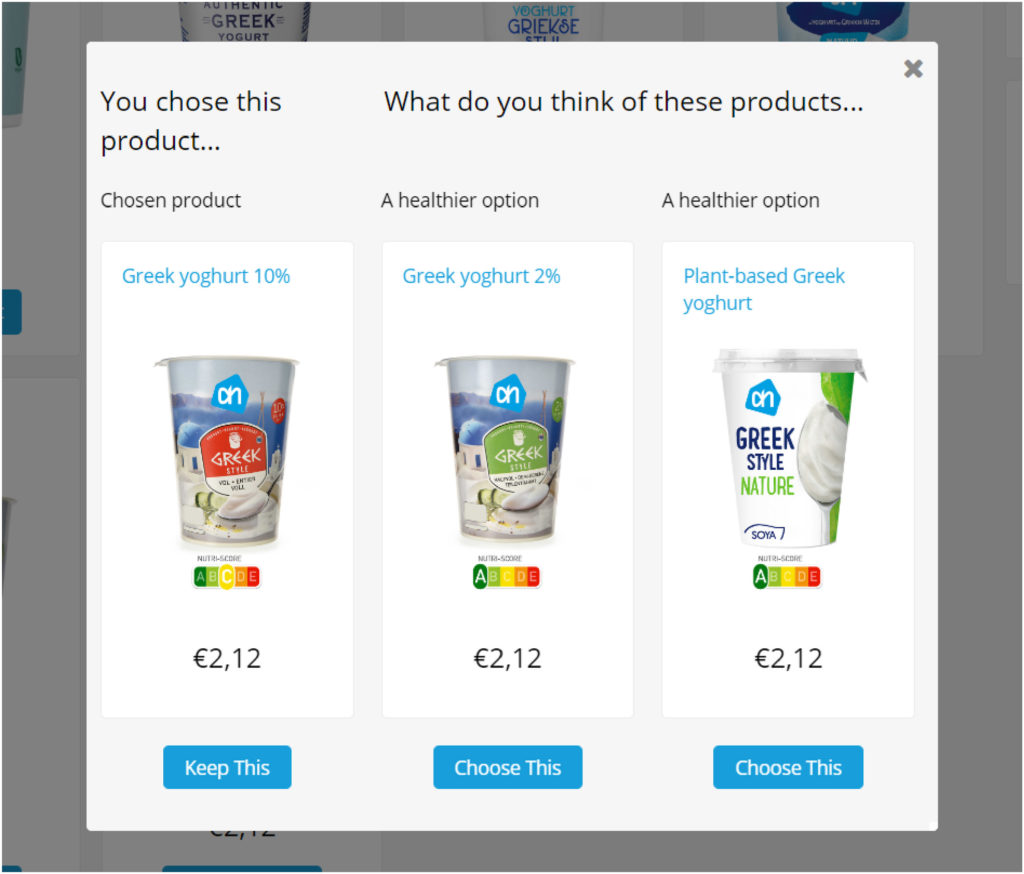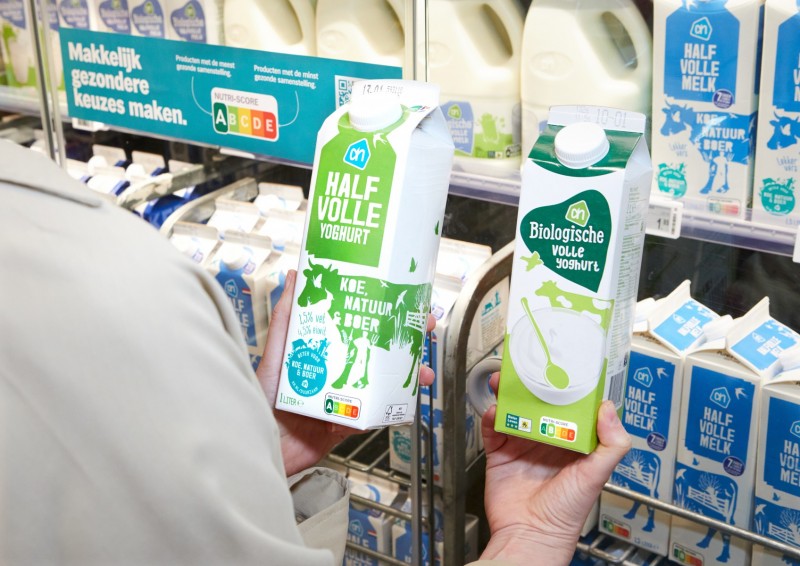PhD student Eva Schruff-Lim (Marketing and Consumer Behavior) explored whether consumers make healthier choices when they are shown food swap recommendations via a pop-up in an online supermarket.
When standing in the supermarket, it is impossible to judge the nutritional content of a food just by looking at it,’ says PhD student Eva Schruff-Lim. ‘Therefore, it is important to communicate it as consumers have the right to know and understand the nutritional content.’
One way to communicate the nutritional content of a product is the traffic light system Nutri-Score, which runs from the healthier, green A to the less healthy, dark orange E. ‘Nutrition information targets consumers before they make a choice. However, it turns out this is not enough for some consumers, as they buy less healthy products despite the Nutri-Score. We are looking for methods to influence these consumers during their buying process. For example, by showing them healthier recommendations after they made an unhealthy choice.’ That’s what the most recent publication by Schruff-Lim and her colleagues is about.
Pop-ups
For her experiment, Schruff-Lim recreated an online supermarket environment. When a participant placed a less healthy product in the shopping cart – with Nutri-Score C, D or E – a pop-up appeared with two healthier suggestions. ‘Those were all similar, dissimilar, or a mix of similar and dissimilar compared to the original choice. We kept track of how often they accepted those suggestions. Afterwards, one of the things we asked them was whether they had seen the Nutri-Score labels on the products.’ She compared the results with a control group that was shown only the Nutri-Score and no suggestions.

‘Receiving food swap recommendations improved the nutritional quality of the shopping cart. It made little difference whether the suggestions were similar, dissimilar, or a combination of the two. The experimental groups and the control group had noticed the Nutri-Score equally. Individuals who are more familiar with the Nutri-Score and have a higher health motivation are more likely to utilize the nutrition information in their choice. Whereas other individuals still make less healthy choices. This means that – despite the Nutri-Score – we still need to take further action to support healthier choices. These food swap recommendations could play a role there.
Intrusive
‘This type of intervention is really still in its infancy’, Schruff-Lim puts the positive results of her research into perspective. ‘Supermarkets cannot yet introduce this in the short term, as it is very complex to set up. They must choose which product – and of which brand – they recommend as a food swap for each unhealthy product, how to address price differences of the healthier products, and repeat this process for all types of products and product groups.’
‘Moreover, they have to see how this fits into their customer experience and weigh how intrusive they want or can be with the pop-ups. That’s still quite an art. Perhaps it could be done through methods used by, say, Bol.com or Amazon, where they show products that other customers have viewed.’

 Consumer compares supermarket two products with different Nutri-Score. Image Albert Heijn beeldbank
Consumer compares supermarket two products with different Nutri-Score. Image Albert Heijn beeldbank 

